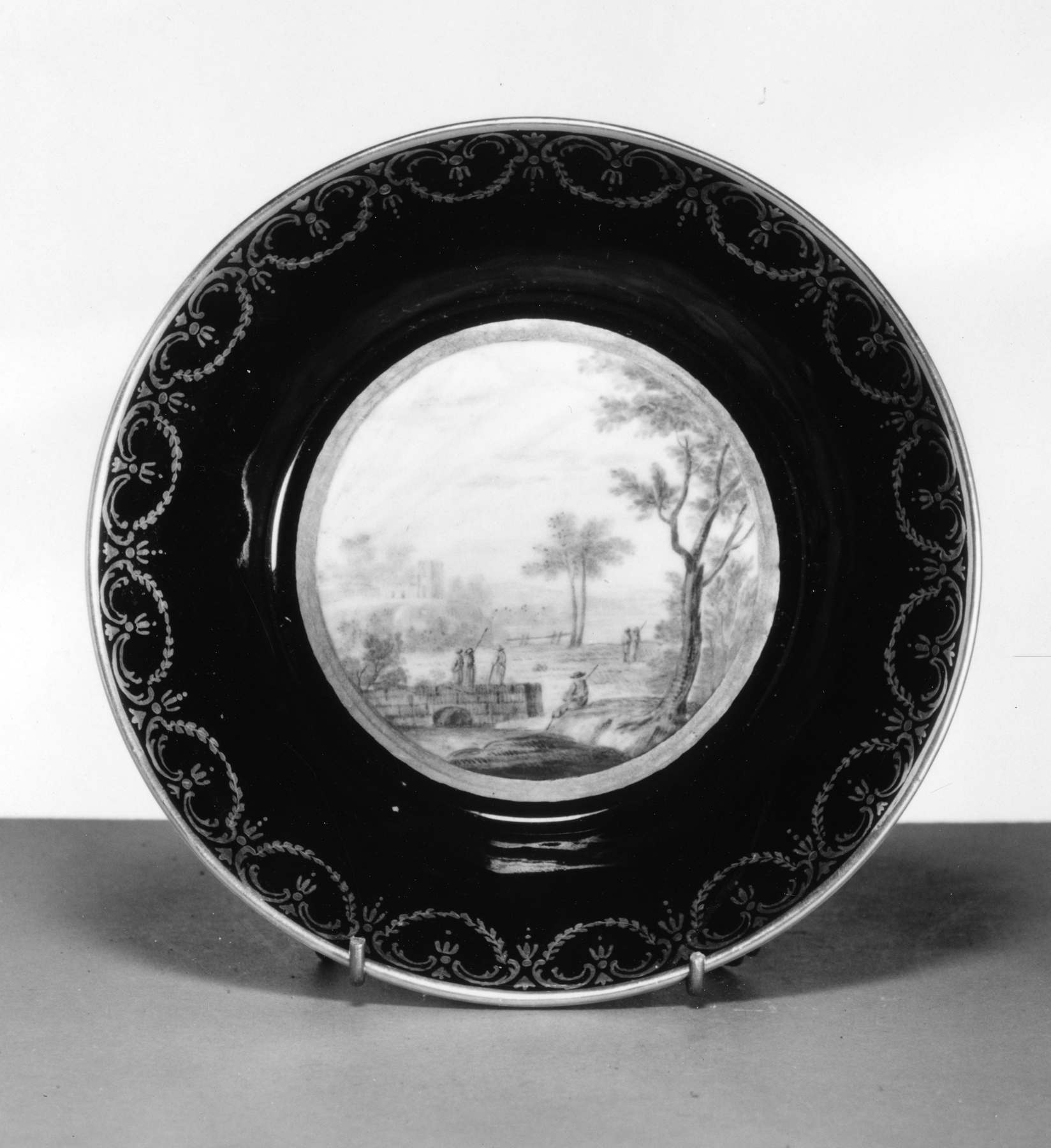Cup and saucer
This single-handled, cylindrical cup would have been used to consume tea; however, coffee and hot chocolate were also served in cups like this one. The deep saucer allowed an individual to pour out his or her hot beverage, allowing it to cool. One would then drink directly from the bowl-like plate. The word “litron” refers to a wooden cup (9.4 cm high and 10.3 cm in diameter) used in the 17th century as the standard measure of grain, flour, salt, and peas. While this particular gobelet ‘litron’ does not conform to these proportions, its cylindrical shape recalls the old wooden vessel. This porcelain set features a cobalt-blue ground color, a finishing that was popular at the close of the 18th century. An ornate gilt pattern of scrolls and garlands rings both the cup and saucer, which each feature large reserves, or areas reserved for imagery, presenting picturesque landscape vistas populated by peasants.
Inscription
Geographies
France, Sèvres (Place of Origin)
Measurements
Cup (A) H: 2 11/16 × W with handles: 3 1/2 × D: 2 9/16 in. (6.8 × 8.9 × 6.5 cm); Saucer (B) H: 1 5/16 × Diam: 5 3/8 in. (3.4 × 13.6 cm); Overall Cup & Saucer (A & B) H: 3 1/16 × Diam: 5 3/8 in. (7.8 × 13.6 cm).
Location in Museum
Not on view
Accession Number
In libraries, galleries, museums, and archives, an accession number is a unique identifier assigned to each object in the collection.
In libraries, galleries, museums, and archives, an accession number is a unique identifier assigned to each object in the collection.
48.689






